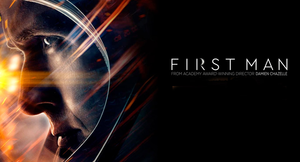Camerimage 2018
Cinematographer Linus Sandgren, FSF, discusses his work on Damien Chazelle’s “First Man”
"The Dark Side of the Moon", by François Reumont for the AFC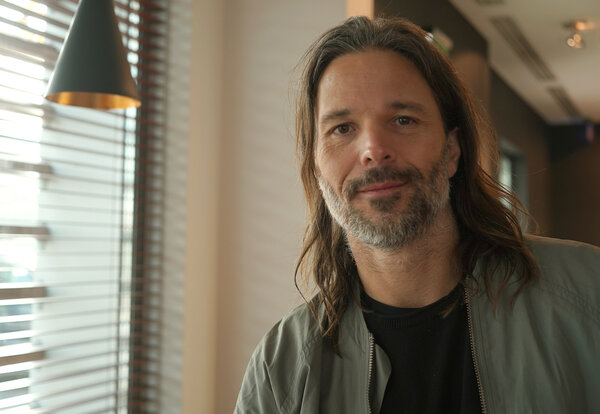
What does the Moon mean to you ?
Linus Sandgren : I’ve always been interested by nature. I enjoy birdwatching with binoculars, for example. It goes back to my childhood. When I was a child in Stockholm, I remember going out one night with everyone to look at the Moon which appeared exceptionally large and red that night. Of course, at the time, I didn’t understand why such or such a phenomenon would occur from an astronomic point of view. But that feeling of the unknown you experience when faced with the mysteries of Space, that infinite expanse that surrounds us, was very strong for me as I began to work on the film, and as I began to learn a lot about space exploration.
You know, the film contains a lot of ellipses, given the absolutely unheard-of number of rocket launches (sometimes several per week), tests, and trial flights that occurred before reaching the Moon. There is also that magical moment that I will long remember, when, during the key scene of the film, Neil Armstrong is walking alone and contemplating the lunar surface, when I found myself alone with the actor and my assistant cameraman on this hyper realistic set, built in an Atlanta stone quarry.
It was Ryan Gosling’s express request to have as few people around him as possible so that he would be able to attain the level of emotion the scene required. The team was sequestered far away from us behind a black tent. At that moment, I really felt as though I were on the moon for a few minutes, surrounded by two Imax cameras, in front of him in his spacesuit, giving us the signal to turn on the first, then the second camera, for the two takes. I don’t know whether I can say that the Moon is now my friend, but in any case, I feel I know it a lot better now than I did before shooting !
Does a filmmaker’s life sometimes resemble an astronaut’s ?
LS : There are analogies between a team on a film and a group of astronauts. Sometimes, we have to leave our families behind for months, and we all live together in a little community, and then there is the film itself, which is the goal in itself, a bit like a space mission, and which often demands work based on prototypes. For example, on the last scene on the Moon, we had to create a unique 200kW bulb for me for the SoftSun (usually equipped with a “standard” 100kW bulb), which we placed on a 50m tall crane, which allowed us to obtain a 5.6 aperture on nearly all of the quarry, which was over 150m wide. Choosing a single light source seemed to us to be the most coherent choice compared with the images actually shot on the moon from NASA’s archives. We really felt ourselves to be on the moon.
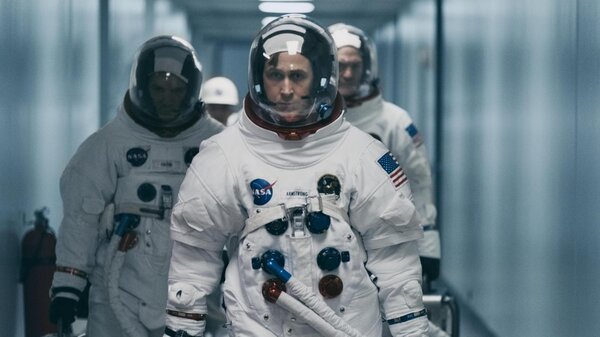
As soon as the film opens with the test flight at the outer limits of the Earth’s atmosphere, you immediately think of Philip Kaufman’s The Right Stuff...
LS : That shot was filmed in a 1/32 replica of the plane which was attached to a motorized gimbal with a gigantic image wall with very-high-definition LEDs that was showing plates from aerial shots. It was totally immersive, and we used that technique again for other space capsule scenes.
The reference to The Right Stuff comes, I think, from our choice to be realistic, because of the fact that at the time, they’d also chosen to film most of the scenes live, without postproduction effects. In terms of influence, Damian and I also watched a lot of films in preproduction - Damien is a pretty avid cinephile ! - in an Atlanta movie theatre, with copies of the movies. But not The Right Stuff. We paid more attention to Gilo Pontecorvo’s The Battle of Algiers or David Maysles’ Gimme Shelter. For the documentary aspect and the way they recreated their story in a raw way. And then for the pure lighting, Pakula’s films, lit by Gordon Willis, such as Klute, All the President’s Men, and Parallax View. Areas of shadow that literally veer into blackness such as in Armstrong’s apartment or during the night scene where Neil is walking with Ed in the woods on base in the moonlight. These were the moments that I am perhaps proudest of in the film, as these scenes express exactly what we were trying to say. The sensation of being surrounded by shadow, on Earth, and the claustrophobia that you then find in Space because, for example, we chose not to show the stars on screen. When he discussed the scene on the Moon, Damien also mentioned the legend of Orpheus and Eurydice : “It’s a bit like the planet of the dead. We should cross it like Orpheus when he goes looking for his wife Eurydice, bitten by a serpent, in the underworld. He is forbidden to look at her until he has traversed the frontier of the underworld back into the land of the living...” But of course, he disobeys. And Eurydice has to return forever whence she has come...
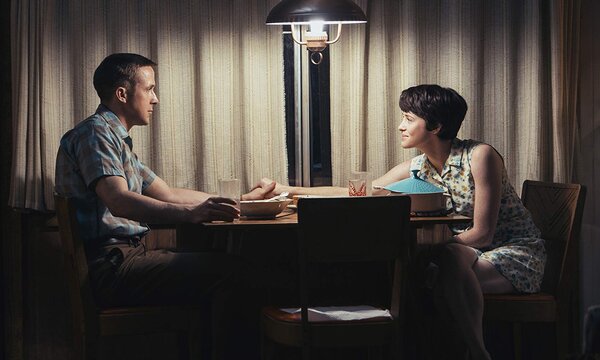
What order did you shoot the film in ?
LS : The film was shot in nearly-chronological order, with a few scenes shot during screentests and rehearsals with Ryan, such as the few scenes with the character of his sick daughter. Of course, that luxury isn’t normal, and allowed us to build the film over time, as we progressively got further and further into the story. I think that the moonlit scene, for example, might not have been shot like that if we’d done it during the first week...
After the Oscars and the success of La La Land, you’ve probably now got an entirely free rein to work as you please !
LS : Freedom doesn’t mean that we get whatever we want right away. In fact, quite the contrary ! For example, we really had to press our case with the studio to get them to allow us to shoot in Super 16. Damien is taken seriously now, and as in all human relationships, trust is built gradually. So, they accepted our “unconventional” approach and our desire to get as close as we could to the characters instead of creating a spectacular film. As a “counter-reference”, Damien asked us to watch Apollo 13, by Ron Howard, which is the perfect model of a highly-spectacular space conquest film. The characters are authentic heroes, and the situations themselves, even though they are adapted from reality, are transposed by the directorial style.
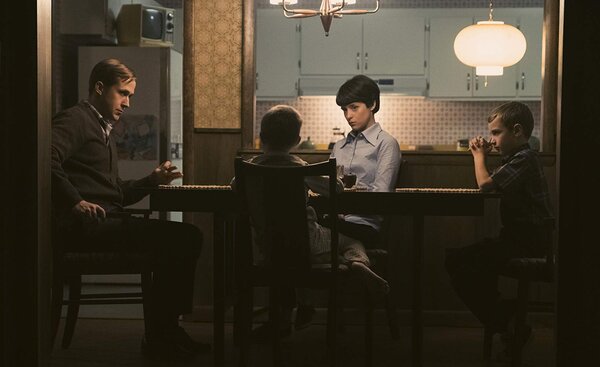
It’s true that the character played by Ryan Gosling is a bit of a fearless prodigy, but almost a bit autistic...
LS : Yes, totally ! He’s almost an antihero. But you get the feeling that all of the astronauts in the film are more or less in the same situation as he is. Having to choose between their personal lives, their families, and what they see as a sacrifice for the sake of humanity... What should they do with their lives on Earth ? A difficult dilemma for each of them, I think. It’s a truly existential question that suffuses the entire film. On that note, I like the scene where Neil Armstrong takes out the little cassette tape to listen to a piece of music in space. When we shot that scene, I felt what might be, at the most basic level, what was most important as a human being : the simple need to cling to music to feel alive inside of the nothingness of space. Each time I watch that scene again - as I did today at Camerimage - I feel very different things on a very personal level, which go far beyond the initial ambition of our film. This is a very strong sort of subtext that I admire in Damien’s films.
Was this human aspect of the film present from the start ?
LS : Yes, it was very evident. Especially since all of the parts of the screenplay that focused on flights or the expedition itself were very technical, with a lot of ultra-realistic dialogue about space and data that I could barely understand at the time. When I discussed this with Damien, he told me that he wanted first and foremost to make a film about that couple who were having a hard time getting over the death of their first child. To show their emotions, the difficulty they had going on with their lives, and to become immersed in their lives from the very first minutes of the film. The majority of the artistic discussions were concentrated on these subjects, searching inside of ourselves for one or two words that could describe the cinematography.
I remember “authenticity,” “solitude,” and “sadness,” amongst the words we found. No matter the film, be it historical, a war film, or even a horror movie, the key of success is transmitting emotions. And it is that emotion that we tried to find together. For example, there is the brief establishing shot where, from the house’s hallway, you see Claire Foy haphazardly putting away her linens. On paper, it’s simple, almost uninteresting ! Well, we shot for well overa minute, with the camera fixed in place, and she just enters and leaves the frame. The film was already too long, and not everything made it into the final cut ! But it made me think what masters like Ingmar Bergman and Sven Nykvist would sometimes do on long takes, leaving the actors literally outside of the frame for long periods of time. That type of movement, almost machine-like, aptly restitutes the distress of the character who is trying to keep busy so as not to think about the tragedy that occurred...
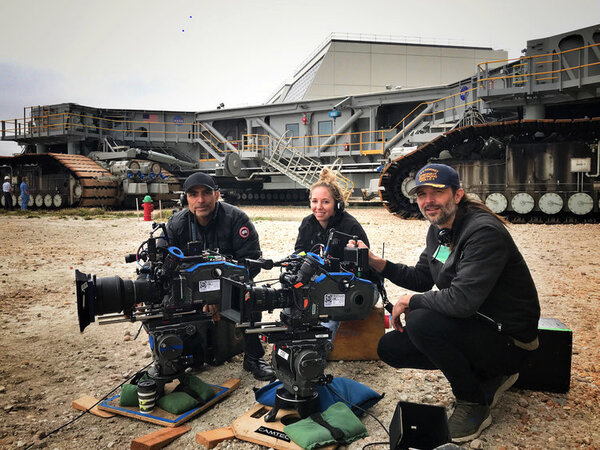
Jean-Pierre Beauviala has just received an award from the ASC in Paris...
LS : I’m very pleased for him. You know, the Aaton camera was the soul of this film’s cinematography. It was the perfect and absolutely natural tool to film First Man with. Exactly as were the Panaflex and the C Series on La La Land. Of course, we could just as well have shot with an Arri 416, but I felt that the Aaton A-Minima and the XTR, the feeling of being a “cameraman,” were perfectly in harmony with what we wanted to communicate at the heart of the film. It was also one of the first comments Damien made to me in preproduction : “I want this film to be shot from the shoulder with an Aaton and a zoom.” And that’s what happened with the main camera, on the parts in S16, in Xtera, and in 35mm 2perfs, with the Penelope. We wanted to go towards an intimacy and realism that we thought would be hard to attain with classic 35mm. The entire first part of the film, before the couple moves to Houston, is shot in Super 16, alternating between 50D, 250D, and 500T emulsions, in function of the needs of each shot. Then we moved to 35mm 2perfs in 250D and 500T for everything that happens on base.
(Interview conducted by François Reumont for the AFC, and translated from French by Alexander Baron-Raiffe)
 En
En Fr
Fr
